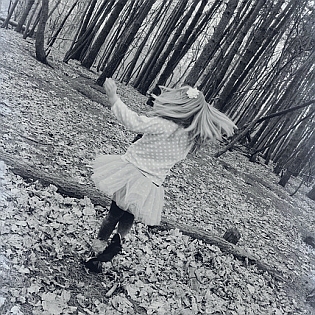 Bee Swarms Mimic Human Brain Neurons to Make Decisions
Bee Swarms Mimic Human Brain Neurons to Make Decisions
Swarms of bees and brain neurons make decisions using strikingly similar mechanisms, reports a new study in the Dec. 9 issue of Science. In previous work, Cornell University biologist Thomas Seeley clarified how scout bees in a honeybee swarm perform “waggle dances” to prompt other scout bees to inspect a promising site that has been found.
— Bioscience Technology, Friday, December 9, 2011
Granny Weatherwax’s beehives were tucked away down one side of the cottage. Some were the old straw kind, most were patched-up wooden ones. They thundered with activity, even this late in the year.
Tiffany turned aside to look at them, and the bees poured out in a dark stream. They swarmed toward Tiffany, formed a column, and—
She laughed. They’d made a witch of bees in front of her, thousands of them all holding station in the air. She raised her right hand. With a rise in the level of buzzing, the bee-witch raised its right hand. She turned around. It turned around, the bees carefully copying down every swirl and flutter of her dress, the ones on the very edge buzzing desperately because they had farthest to fly.
She carefully put down the big sack and reached out toward the figure. With another roar of wings it went shapeless for a moment, then re-formed a little way away, but with a hand outstretched toward her. The bee that was the tip of its forefinger hovered just in front of Tiffany’s fingernail.
“Shall we dance?” said Tiffany.
In the clearing full of spinning seeds, she circled the swarm. It kept up pretty well, moving fingertip to buzzing tip, turning when she turned, although there were always a few bees racing to keep up.
Then it raised both its arms and twirled in the opposite direction, the bees in the “skirt” spreading out again as it spun. It was learning.
Tiffany laughed and did the same thing. Swarm and girl whirled across the clearing.
She felt happy and wondered if she’d ever felt this happy before. The gold light, the falling seeds, the dancing bees … it was all one thing. This was the opposite of the dark desert. Here, light was everywhere and filled her up inside. She could feel herself here but see herself from above, twirling with a buzzing shadow that sparkled golden as the light struck the bees. Moments like this paid for it all.
Then the witch made of bees leaned closer to Tiffany, as if staring at her with its thousands of little jeweled eyes. There was a faint piping noise from inside the figure and the bee-witch exploded into a spreading, buzzing cloud of insects which raced away across the clearing and disappeared. The only movement now was the whirring fall of the sycamore seeds.
Tiffany breathed out.
“Now, some people would have found that scary,” said a voice behind her.
Tiffany didn’t turn around immediately. First she said, “Good afternoon, Granny Weatherwax.” Then she turned around.
“Have you ever done this?” she demanded, still half drunk with delight.
___
Excerpted from Terry Pratchett’s A Hat Full of Sky, second of the Tiffany Aching books, chapter fourteen.
With a deep bow to Julia Bascom’s The Obsessive Joy Of Autism, which is currently taking Mark Zuckerberg’s Mansion of Mirrors by storm.
Thanks to Meredith L Patterson, @marydydd, for making my day with the tweet pointing to the study mentioned above:
Flocking and swarming #algorithms, *bitches*. bit.ly/vJNASY
[image via Flickr/Creative Commons]
Mark Stairwalt on 12/10/11 in Art/Play/Myth, featured | 1 Comment | Read More
Comments (1)


Beautiful.